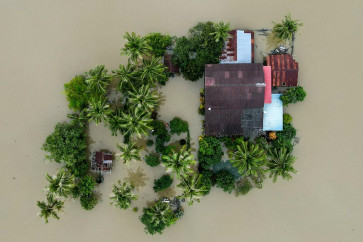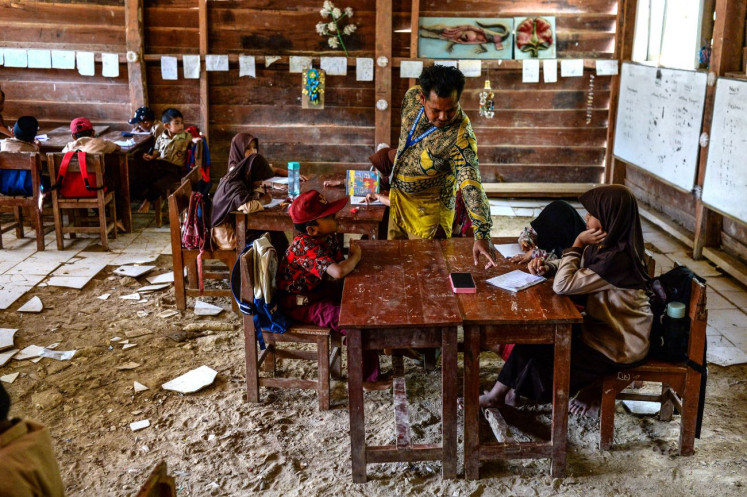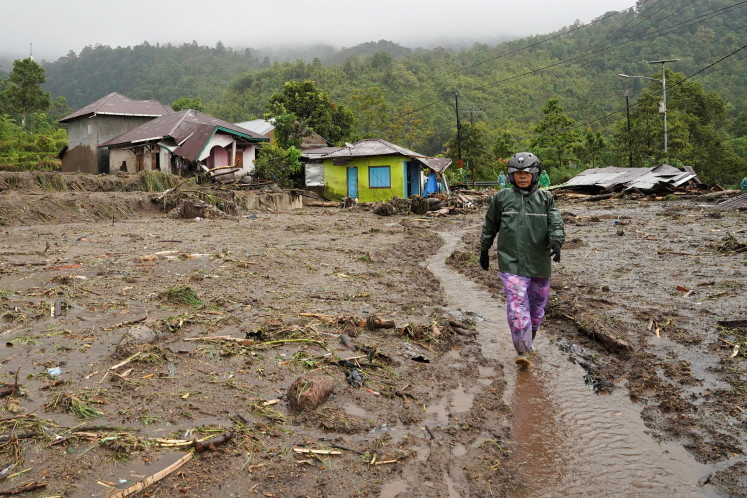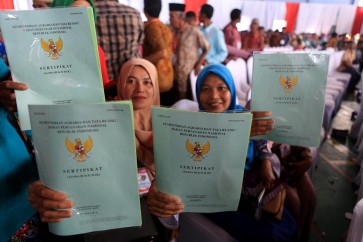Popular Reads
Top Results
Can't find what you're looking for?
View all search resultsPopular Reads
Top Results
Can't find what you're looking for?
View all search resultsAbandoned land should not mean abandoning reform
The government cannot fulfill its land registration agenda without the parallel implementation of an integrated digital land system, including the realization of the single map policy, and land administration reform to eliminate bureaucratic roadblocks and eradicate corruption in the sector.
Change text size
Gift Premium Articles
to Anyone
I
n recent weeks, the issue of the government reclaiming land abandoned for more than two years has resurfaced in national media coverage. Nusron Wahid, the agrarian and spatial planning minister and head of the National Land Agency (BPN), said earlier this month that around 100,000 hectares were under review for potential designation as abandoned land to be retaken by the state.
Still, the government has emphasized that the land designation process cannot be completed quickly, since it requires as many as 587 days for verification, identification, warning and determining formal status as mandated by Government Regulation (PP) No. 20/2021 on control of abandoned areas and land.
The debate on whether the state has the right to control land was in fact settled long ago. Since the enactment of Law No. 5/1960 on basic agrarian principles (UUPA 1960), the notion of state ownership of land once imposed under the colonial-era principle of domein verklaring (free state domain), or declaration of state ownership, is no longer recognized.
Article 2 of UUPA 1960 affirms that the state acts only as an authoritative organization, mandated by the people through the Constitution, to regulate land use solely for the prosperity of the people. This means that the government’s authority over land matters is administrative in nature and remains limited by the constitutional rights of citizens.
As of March 31, government data show that 47.1 percent of nontax state revenue (PNBP) still comes from the natural resource sector, which ranges from mining and plantations to forestry. In fact, these sectors are heavily dependent on land availability.
Even non-resource sectors such as housing and infrastructure also rely on access to land. Although property demand weakened to only 0.90 percent annual growth in the second quarter of 2025 from 1.07 percent in the first quarter, according to Bank Indonesia’s Residential Property Price Survey (SHPR), land remains a fundamental need in this sector.
For this reason, the designation of abandoned land cannot be viewed merely as a lengthy administrative process. The policy must be carefully calculated and accompanied by effective communication, as it can directly affect the land-based investment climate. Within this context, another critical dimension must be considered, that of land tenure security.



















